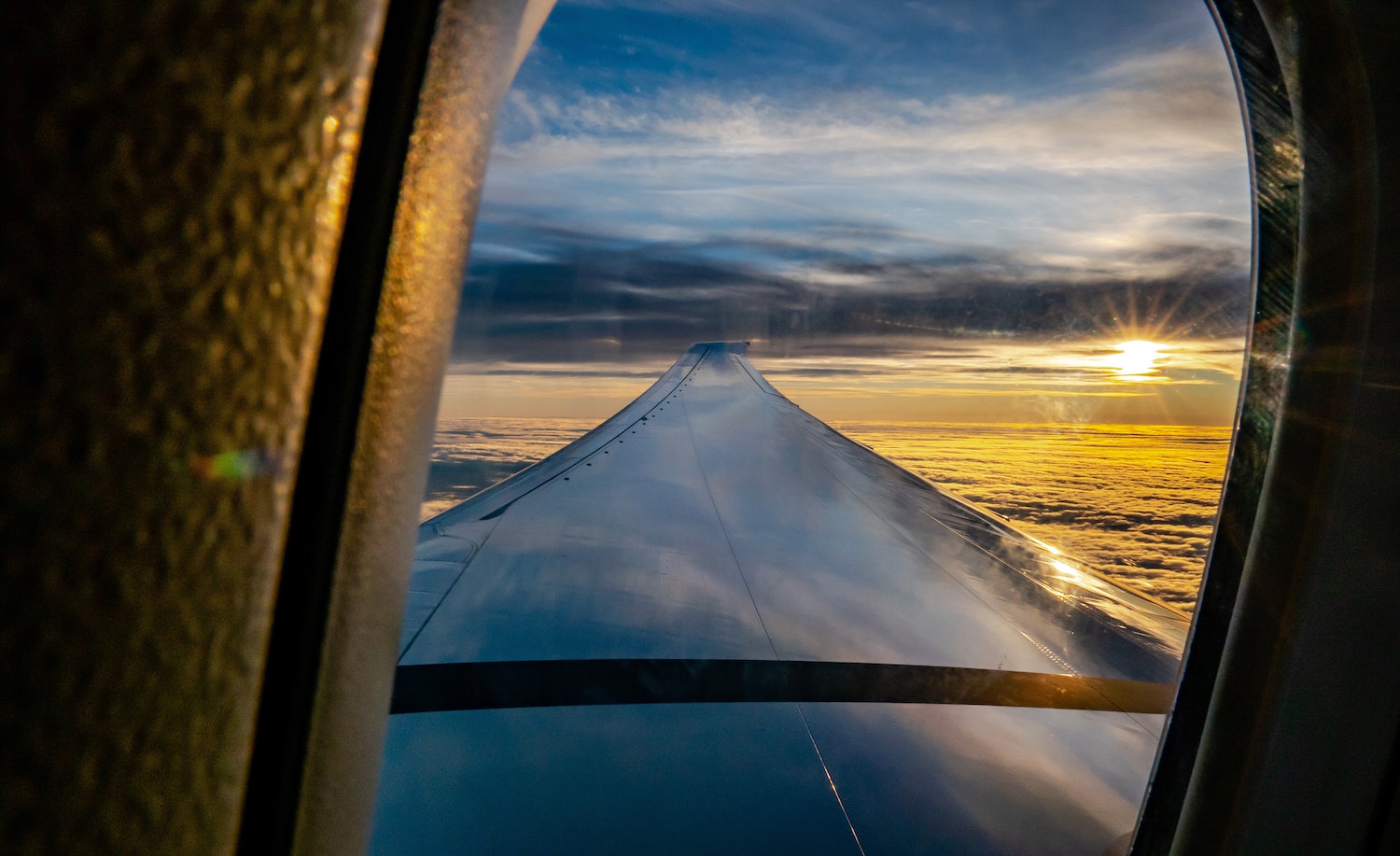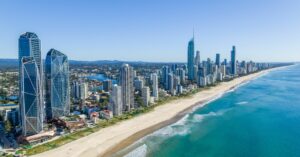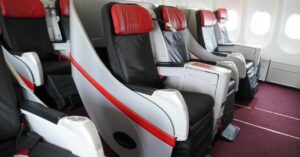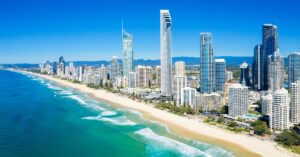Find out what is like to fly during Coronavirus travel ban from Europe’s busiest airport.
“Planes are still flying from London?”
We are currently living in an age where the question may sound just as absurd as the old ‘pigs can fly’ assertion. Coronavirus (COVID-19) has cleared most of the world’s skies, but few flights are still taking off, a beacon of light for those wanting to be close to their loved ones in times of uncertainty.
Australian expat Michael Abson is a digital marketing manager based in London who made the expensive decision to catch a flight from London Heathrow to Perth amidst a global pandemic.
Returning to Australian shores only a few days ago, Abson reveals to So Where Next from his mandatory quarantine stint in a CBD hotel what his ‘quick’ 19-hour flight was like flying during the Coronavirus travel ban.
Scrabble to find a flight
After the UK Government announced a layoff scheme for employees, I’d been told not I wouldn’t need to work until the start of June at the earliest. So instead of spending the days locked in my tiny flat in London, I’d use this as the chance to return home to Australia and spend some quality time with my parents.
Flights were limited and expensive with Qantas pulling their direct route along with the likes of Emirates, Singapore Airlines and Cathay Pacific all ceasing flights into Western Australia. Thankfully, Qatar Airways was still operating three daily flights out of London with an hour connection in Doha to get back on Aussie soil in less than 24 hours.
See the latest COVID-19 travel alerts from Qatar Airways here.
Europe’s busiest airport resembles a ghost town
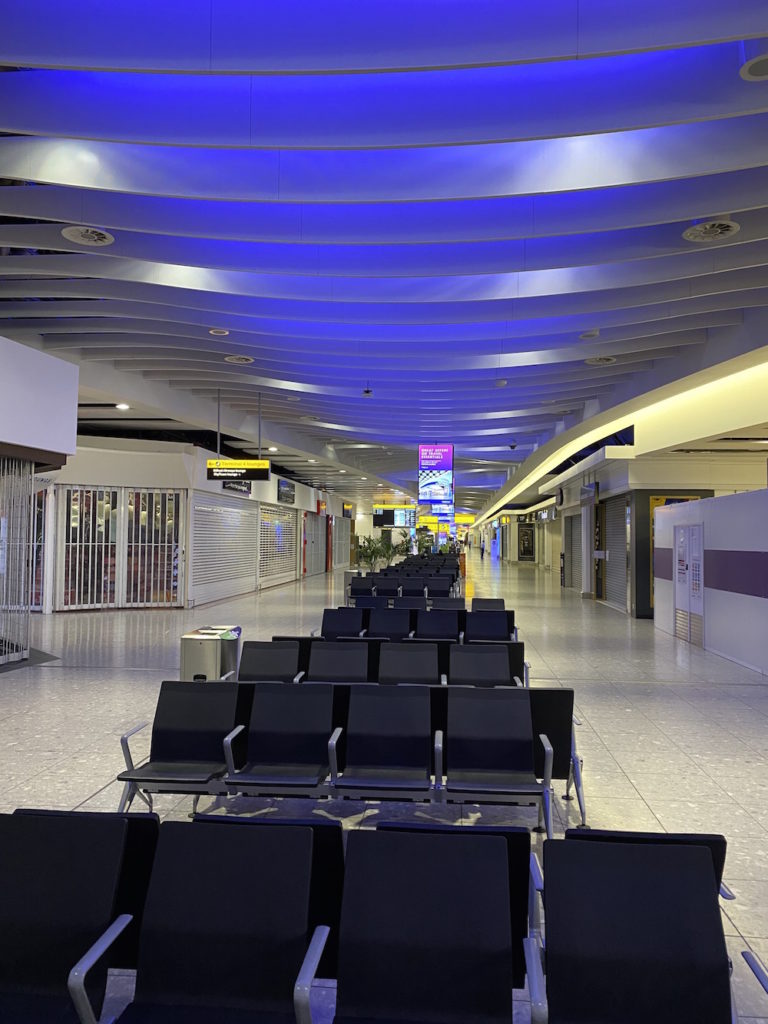
The first indication that things were about to be very different at London Heathrow Airport was the sheer number of parked planes. They were everywhere. Driving along the perimeter roads to reach the airport, I saw countless British Airways and Virgin jets grounded.
Every spare piece of tarmac that wasn’t operational had a jet parked. In an airport where things rarely standstill, this was an odd sight. Even weirder is seeing planes that aren’t planned on being flown for a while having their engines covered and taped up. Who knew when they would next roar through the skies.
The breeziest airport check-in
I knew that flying during the biggest downturn in global aviation that the world has ever seen was going to be an interesting experience, but I didn’t quite know what to expect. Would it be more stressful than usual with enhanced security checks, would boarding and service be slower due to social distancing rules?
Pulling into the terminal re-iterated this state of closure with the world coming to a grinding halt due to COVID-19. There were no taxis dropping people off, and I could only see one other car outside. I entered the terminal and found the Qatar check-in desk without passing a single other passenger checking in for my flight. Normally, I would feel like a human dodge ball trying to make it through the crowds to reach the counter. The staff were friendly and probably just glad for someone to interact with.
Weirdly enough, no-one was wearing gloves and only about a third of all airport staff seemed to be wearing masks or any protective gear at all. Security was delightfully quick with a lack of passengers, and there were no extra COVID-19 screening checks before heading airside. Got a fever? Guess it doesn’t matter since you’re leaving the country anyway.
Lights were dimmed, shop fronts were shuttered, and the only signs of limited life came from a Boots and WH Smith that remained open. Everything else was closed.
Flying through a Coronavirus travel ban
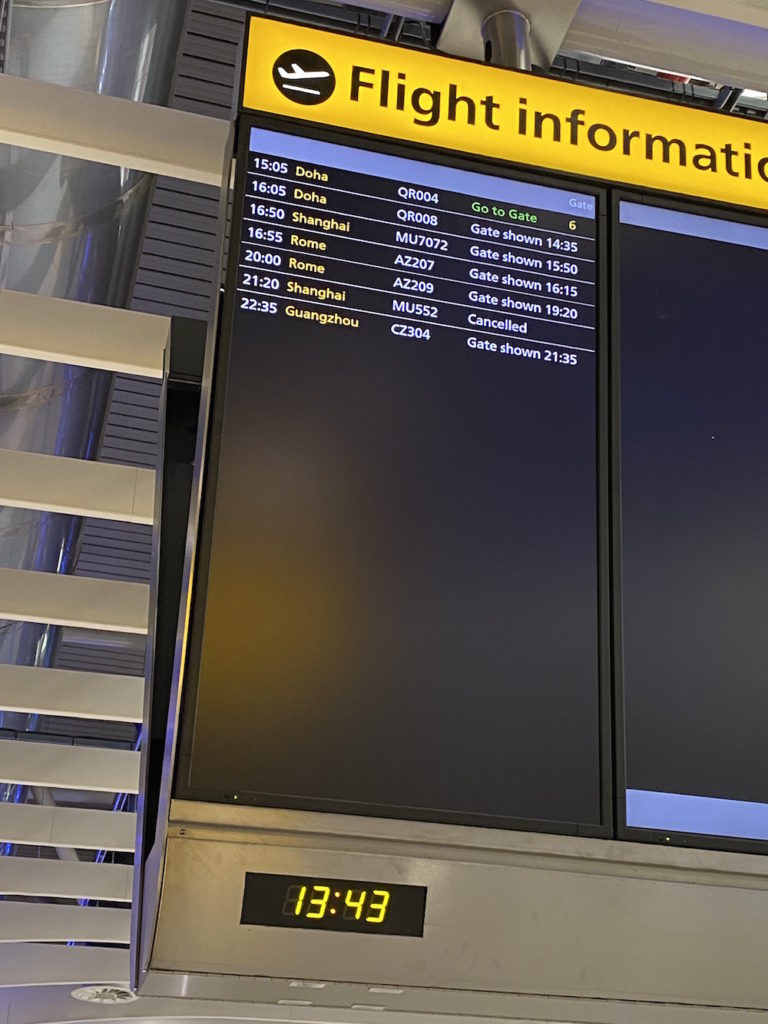
It was 1:30 pm, and I had a quick look at the departure board. What was formally Europe’s only had seven flights departing over the next nine hours. I walked the length of the terminal and saw no open gates and no flights waiting to leave. Looking over to one of the other active terminals saw all of their airbridges hanging in the air, connecting to nothing. It’s what I imagine Heathrow to be like in the middle of the night….except it was a bright and sunny Thursday afternoon.
There was definitely no plane spotting to be done today.
Biosecurity threats
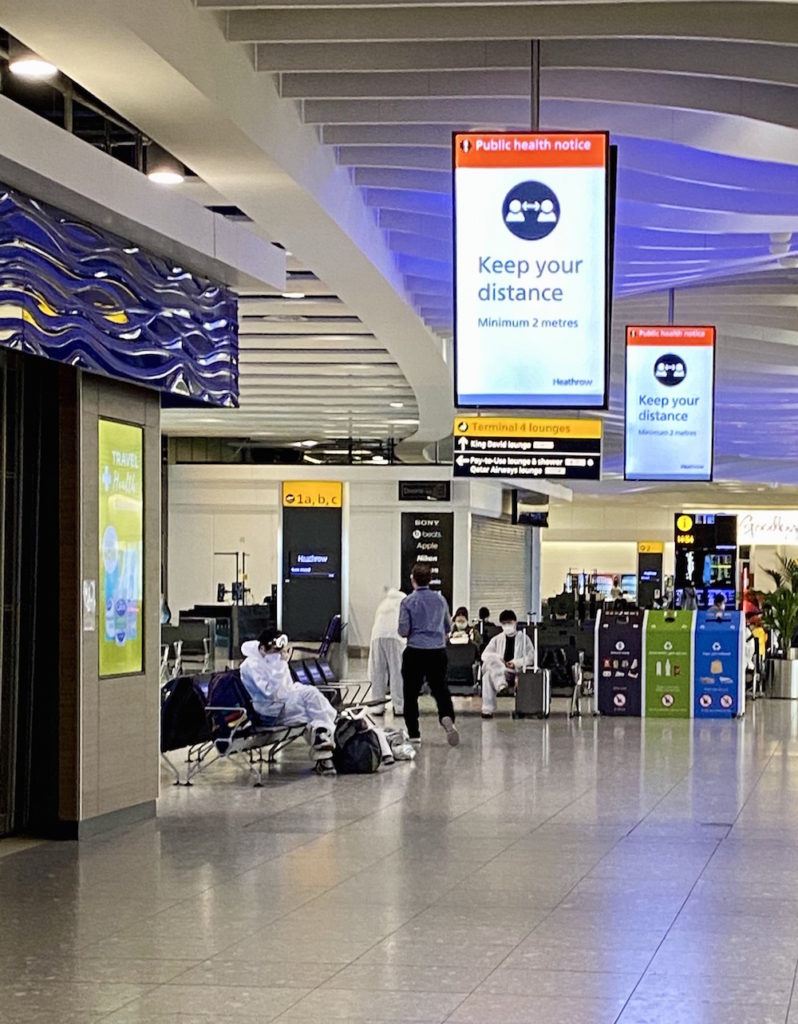
I started walking around the empty terminal and came across a few passengers that were waiting for a flight later in the day. A small fraction of waiting passengers had face masks on, which seemed to echo the UK stance that the threat of COVID-19 is no big deal.
Later on, I noticed movement back towards security. Initially, my heart started racing as it looked like a biosecurity team, dressed in head-to-toe white hazmat suits had entered the terminal. Was this to deal with severe health complications with a passenger that had made it past security?
Cautiously I walked back towards security and noticed the suits and facemasks were all slightly different in the finish, some with science goggles on and others with plastic sheeting stuck together across their face. This was no biosecurity team, but passengers arriving for the later flight to Shanghai. Travelling to the epicentre of the virus, these passengers were taking no risks and addressing the situation far more seriously than the British public.
Priority boarding for all
Just as boarding was scheduled to commence, I wandered over to our gate (easy to find, since it was the only one open) and saw about 20 people waiting around the gate. Usually boarding a 777-300 takes a good half an hour with about 250 passengers on an average flight.
I was on a videocall saying farewell to some friends when less than five minutes after the gate was announced, all passengers had boarded, and the gate was now closing. You’d be forgiven for thinking we were boarding a small propeller jet, not a Boeing 777-300 that could carry hundreds of people halfway around the globe. I finished my goodbyes and was the last passenger to board, minutes after boarding commenced.
We then promptly pushed back from the gate and began our taxi through the deserted airport. With no other planes waiting to take off and minimal landings, it was straight to the end of the runway and up to 35,000 feet for us.
Social distancing at high altitude
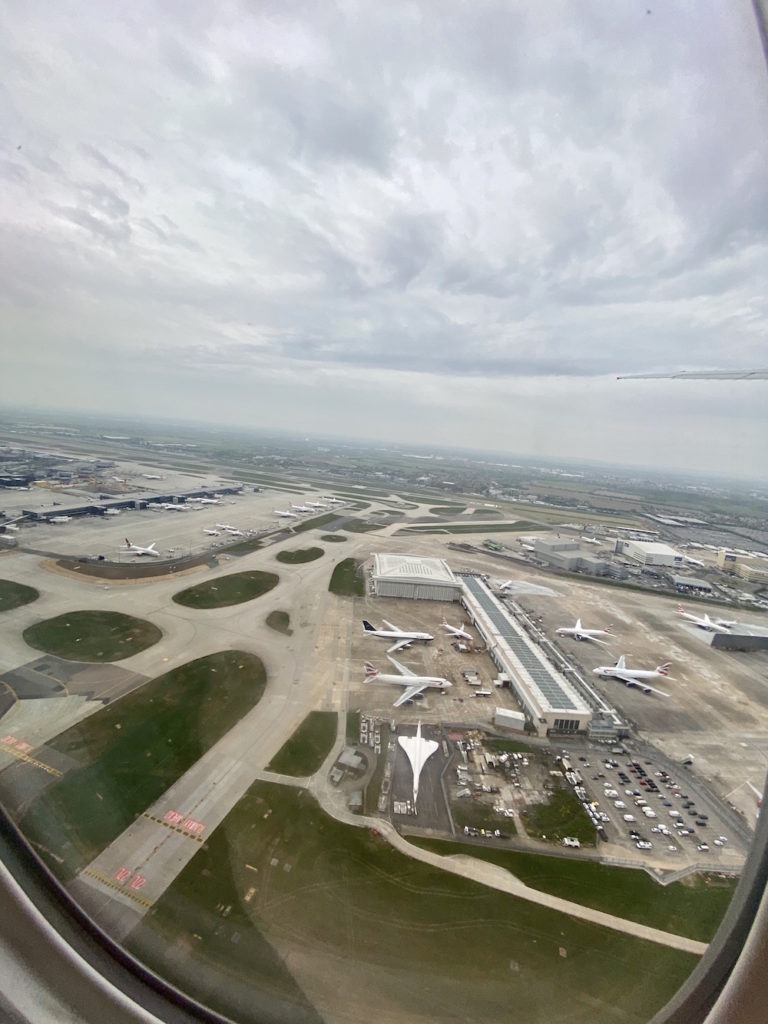
Qatar had left the majority of the economy cabin empty and seated all passengers (about 40) in the small rear cabin, where my seat, 51A was located. Putting everyone into the rear cabin makes service easier for the crew, but meant passengers couldn’t practice social distancing as much as they could spread out across the aircraft.
Some rows like mine had a single passenger, but others had two, and there was someone in the seat in front of me; a good 45cm away, not the recommended 1.5 metres. But then this makes it easier to thoroughly clean the part of the cabin we were in, and also provide attentive service with reduced crew numbers. However, on my flight to Perth, we were free to sit anywhere in the vast cabin, totally debunking these theories. Who knows what the thought process is there!
I was pretty happy since I still had three seats and a window to myself, and there was no-one in the row behind me, so I was free to recline at will. I guess the only good to come out of the Coronavirus travel ban was being able to fly in comfort. Happy flying!
Mixed in-flight service
All the cabin crew wore face masks and were still as polite and happy to interact with passengers as ever.
I was told on the flight from London to Doha that pillows and blankets were no longer available due to COVID-19, which I thought was fair enough – I’ve heard enough stories about plane comforts not being overly clean at the best of times. However, upon boarding for the 11-hour trek from Doha to Perth, I was delighted to see that every seat in the economy cabin had a pillow and blanket awaiting us. Time to build a pillow fort and get some decent sleep.
Transiting in Doha
With global aviation at a standstill and passenger numbers dropping almost entirely, I was surprised and a bit shocked to have to get a bus to the terminal when we landed in Doha! Cramming the ‘full’ plan of circa 40 people onto a bus didn’t seem like the best way to practice social distancing.
Once inside, it was a quick through security (Doha can be a transit nightmare at times) and into another deserted terminal. How they couldn’t find a gate for our incoming flight was beyond me!
Arriving into Australia – home sweet quarantine
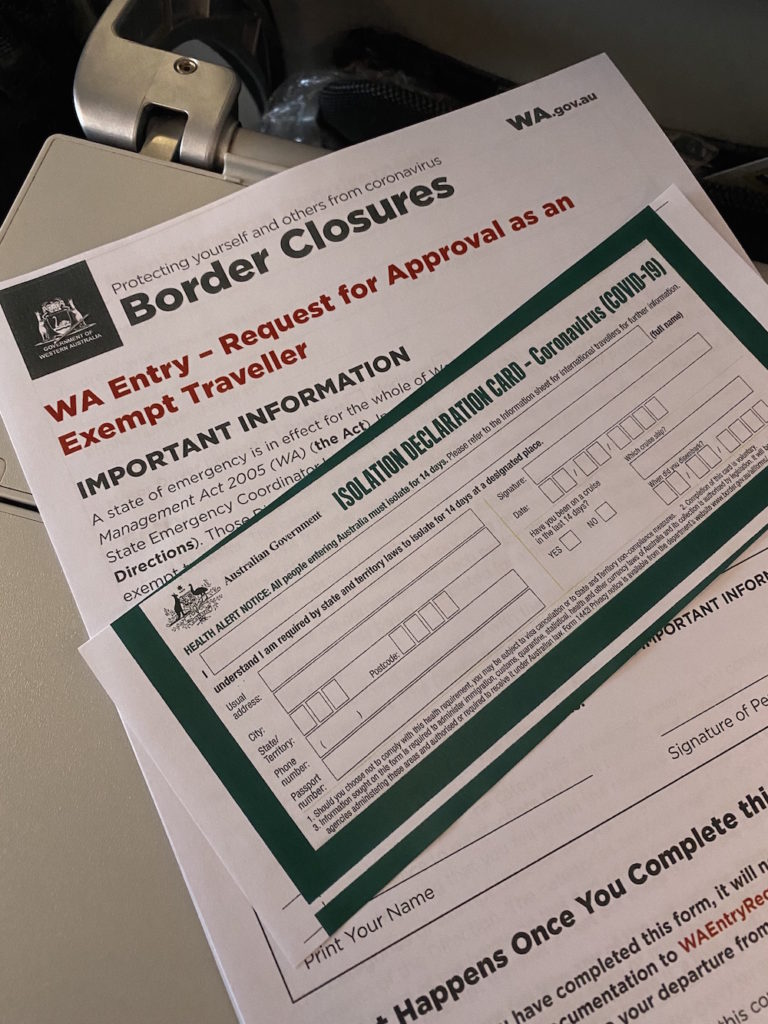
As expected, we were the only international flight arriving into Perth and the scene in the airport was very different. After landing, a border security official came onto the plane and announced the process we were about to undertake over the PA. The Coronavirus travel ban was in full effect. He confirmed the mandatory 14-day hotel isolation we would go through and the cabin crew provided COVID-19 declaration forms we were to fill out; one from the federal government and the other required to enter Western Australia (since the hard border has been instated with the rest of the country).
We disembarked the aircraft and were handed another information form from a security official dressed in a mask and full white bodysuit. I then appreciated the walk through to immigration control as I knew it was the last decent walk and taste of freedom that I would have for the next fortnight.
Immigration was quiet, and the eKiosks were updated to confirm we knew we were to isolate for 14 days upon arrival. After officially entering Australia, we underwent a health screening and asked if we were experiencing any symptoms, and if we were in contact with anyone that had a confirmed case of COVID-19 in the past week. They took and recorded our temperature before proceeding to baggage claim.
After getting our bags, it was straight to a police desk where we had to confirm our intent to either stay in WA or transit to the eastern states. The officers then provided our ‘isolation direction’ and were warned that breaching this direction would result in fines or imprisonment.
We were then escorted directly onto busses, with all of two minutes of contact with the outside world. The split the 40 passengers up across five busses and then formed a police convoy to take us to our hotel in Perth’s CBD. The convoy of five busses was flanked by two police cars at the front and back, with one driving forward to block off round-a-bouts and intersections, ensuring the fleet of busses went through together. I have to say; I felt more like a convicted felon that a returning traveller.
It was then straight to my hotel room where I would remain for the next fourteen days. Oh, how I cannot wait to feel and breathe in that Perth air again.
Feature image: Upsplash by Sangga Rima Roman Selia
Read the latest in Western Australia’s updates and news on So Perth
See more: Latest Stories



